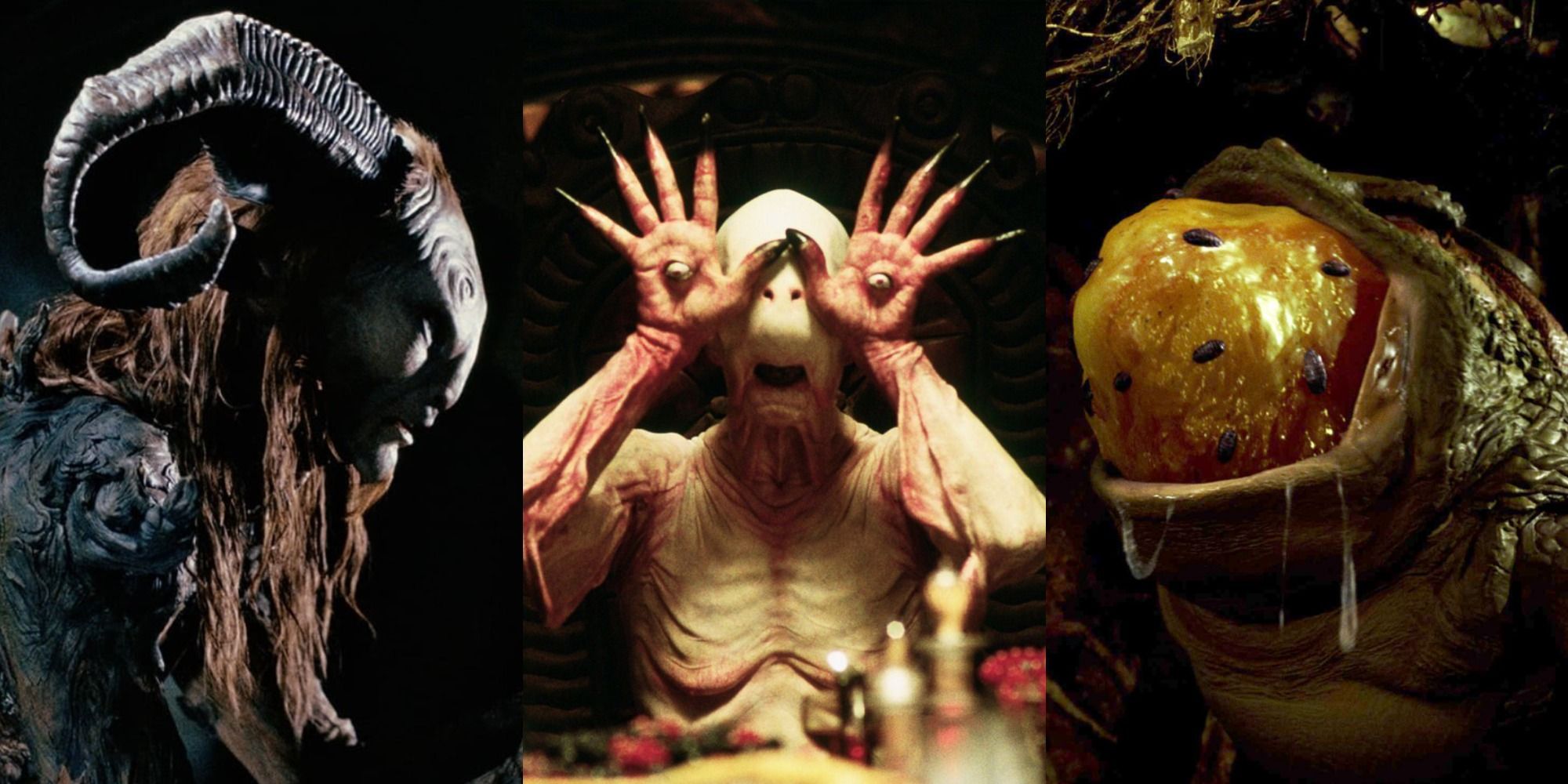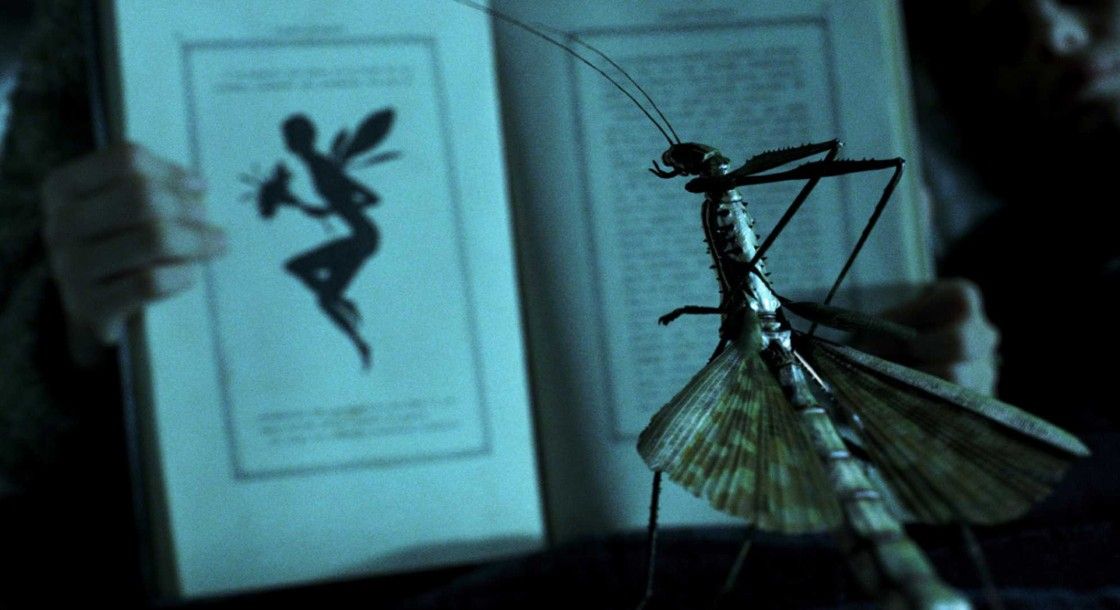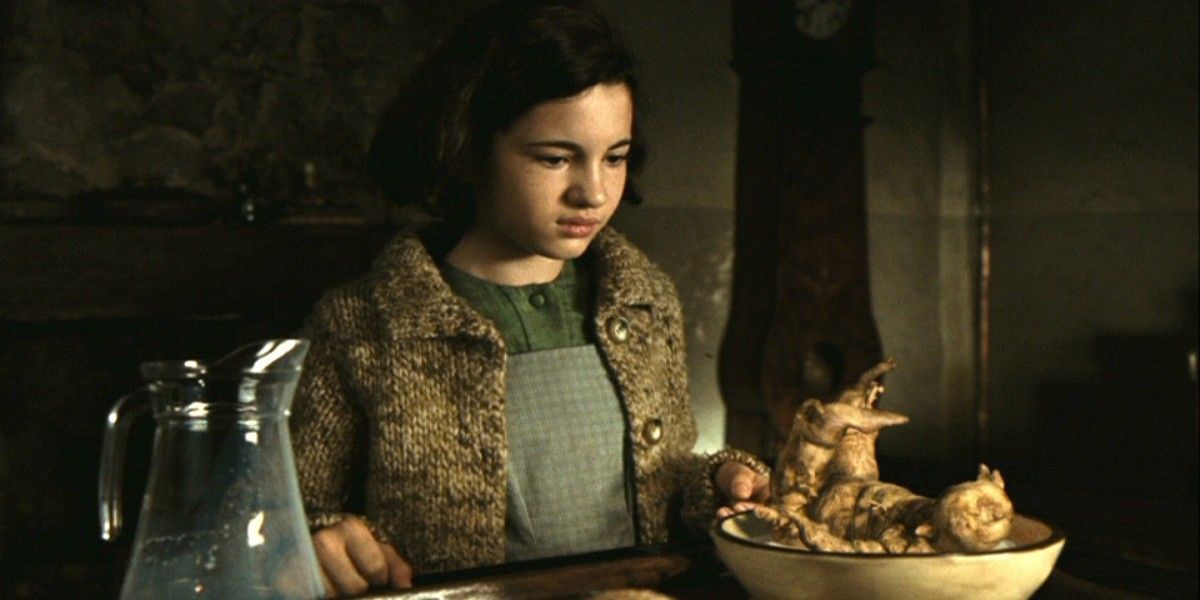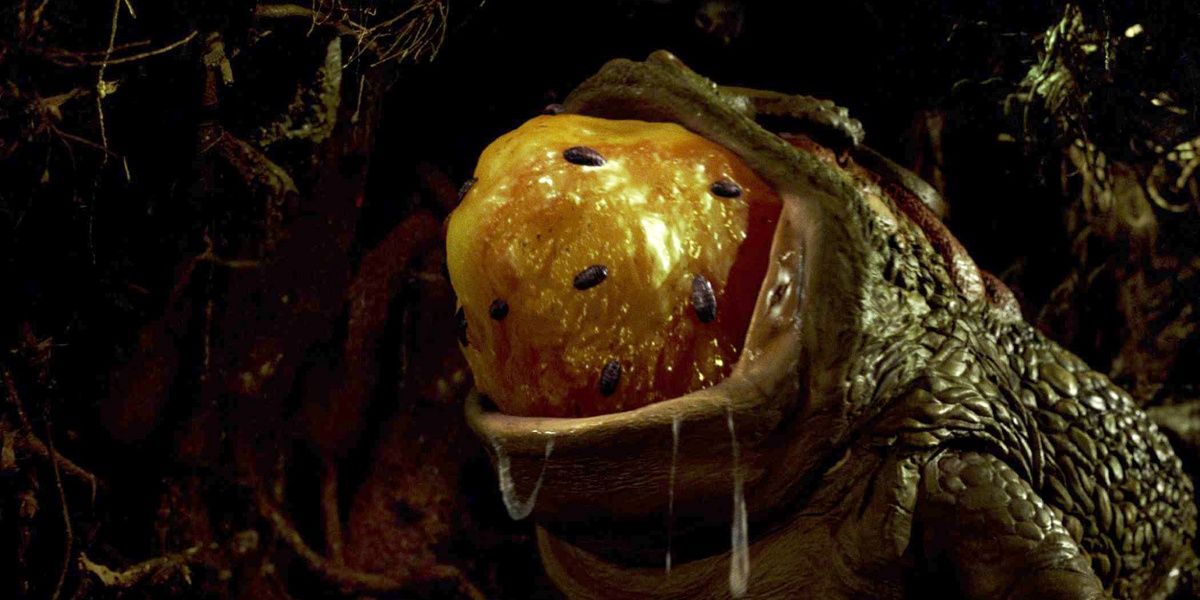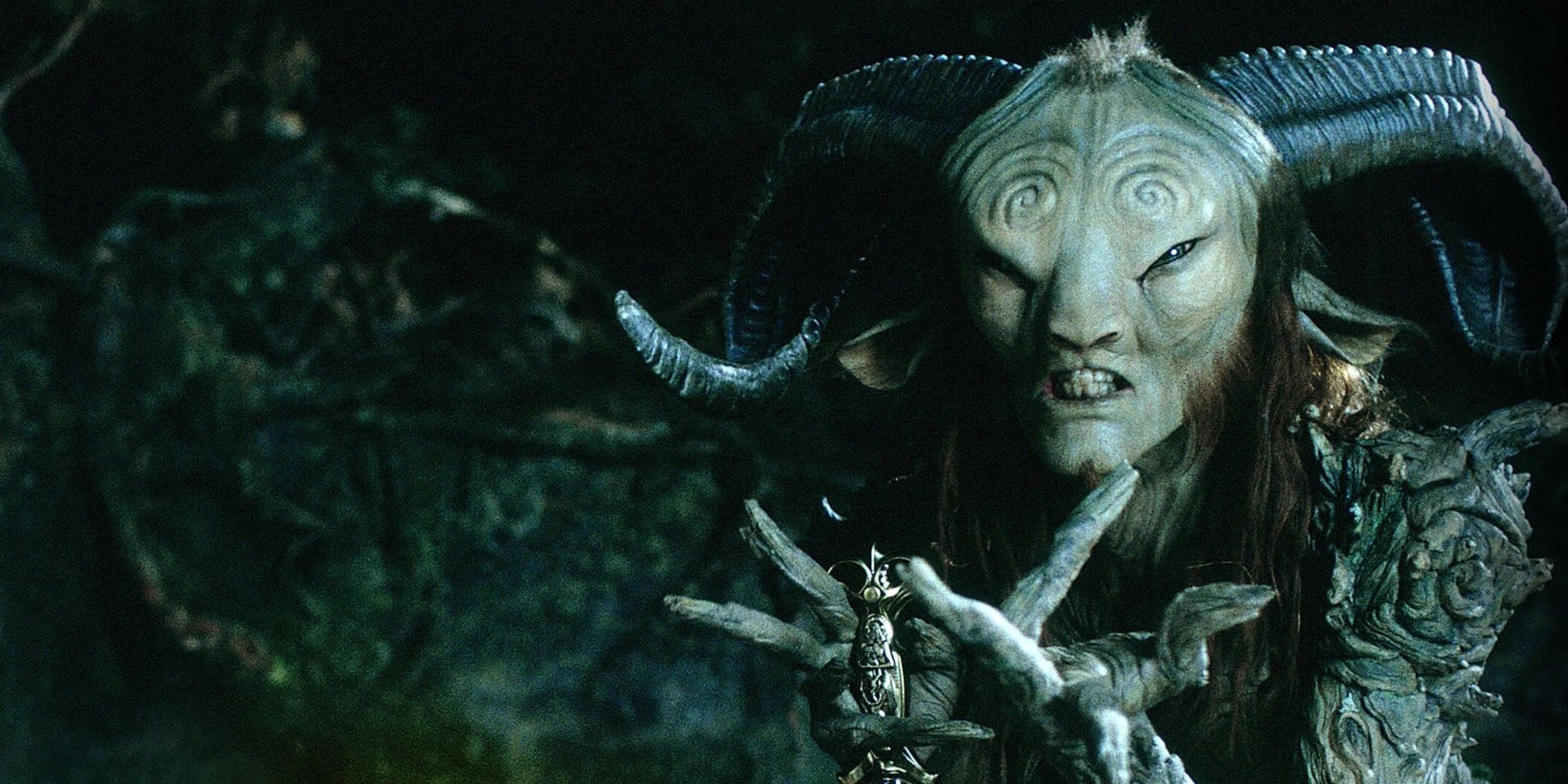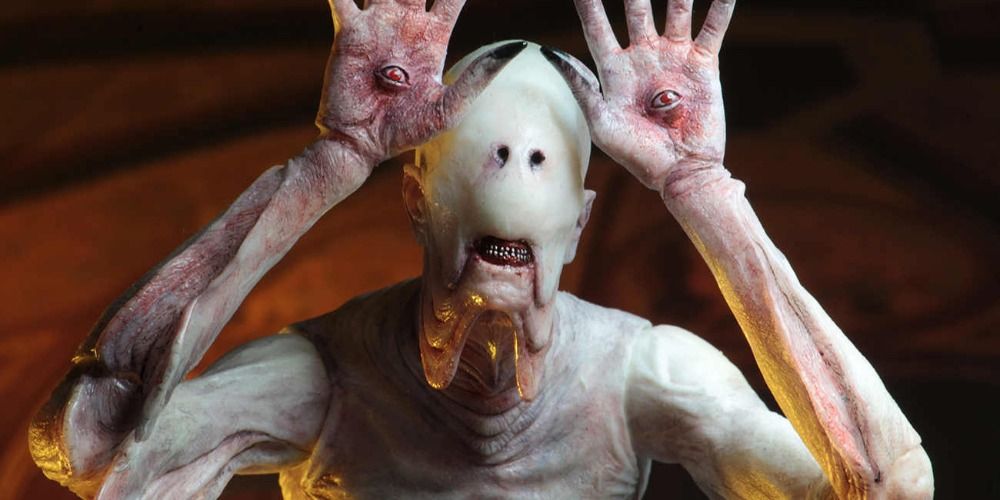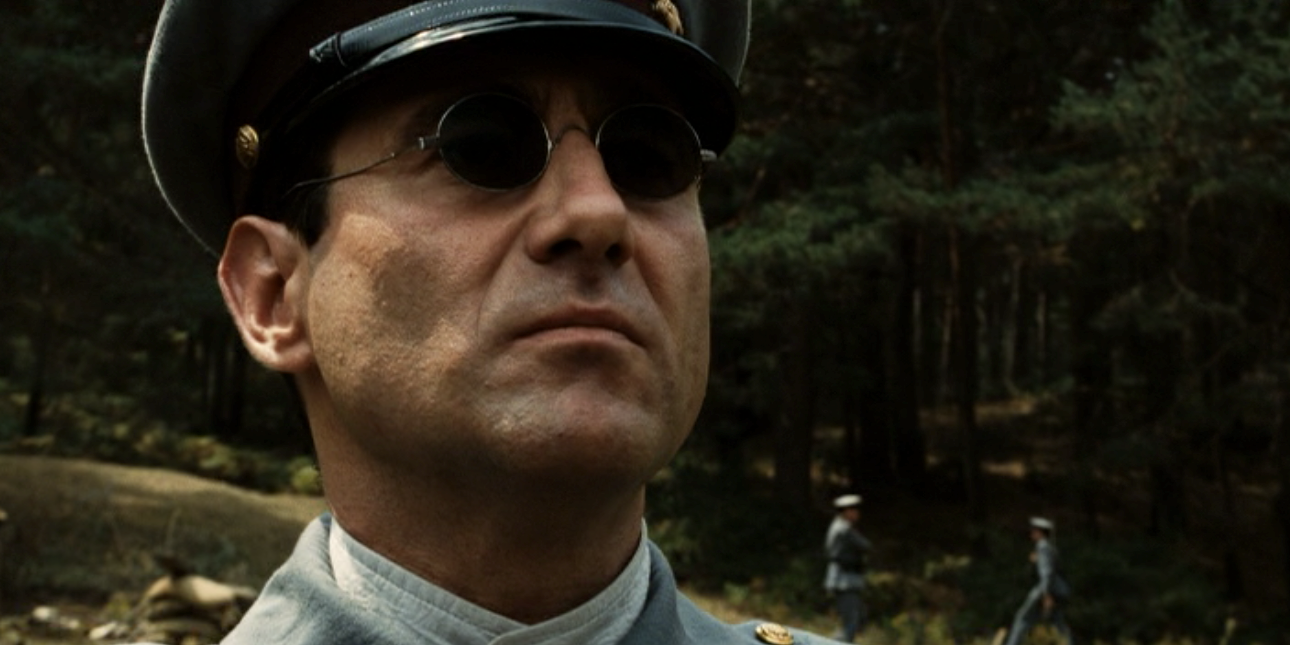Director Guillermo Del Toro created a visual and narrative masterpiece in Pan's Labyrinth. Many years later, his visuals still stun, and his story still delivers. The movie juxtaposes two worlds: the "real world" in which Ofelia (the heroine) is in Franco Spain, with her mother married to a cruel military captain, and the fairytale world in which Ofelia is a long-lost princess on an important quest. The fairy-tale world may seem more hopeful than the "real world," but the rules are just as tricky, the characters just as morally questionable, and the risks just as dangerous.
Some may read one world as an escape from the "real world," but the movie seems to suggest that both worlds co-exist. In the movie, there are unforgettable creatures/monsters. Grotesque but powerful, here are the top horrific monsters, ranked.
Las Hadas/Fairies
Ofelia immediately spies a peculiar-looking insect that's large, grotesque, and yet elegant. It looks like a stick bug with wings or a cousin to the praying mantis. She tells her mother, Carmen, that she saw a fairy. Later in the evening, the insect follows her to the room she shares with her mother. In front of her eyes, it transforms its body into the fairy-shape she sees in her storybooks.
The fairy doesn't have the Tinkerbell-associated beauty, and while it's elegant, it is still grotesque. The Faun serves it raw meat, and the three fairies swarm as they fly. They are meant to protect Ofelia, and she doesn't fear them--even if viewers do.
The Mandrake Root
The Faun gives Ofelia a mandrake root to help improve her mother's (Carmen) health and pregnancy. Since they have arrived, her mother has been ill--seemingly on the cusp of living or dying during this very difficult pregnancy. For Captain Vidal (Ofelia's stepfather) the birth of their son is the most important concern, and he would willingly sacrifice Carmen's life for it.
Ofelia is told that the mandrake root is magical, that it's a plant that dreams of being human. She must put it in a bowl of fresh milk under her mother's bed and feeds it two drops of blood each morning. The root cries and coos as if it is a real baby. It moves like a baby kicking its feet, and when it's thrown into the fire--it screams. Its human-like (or baby-like) characteristics make the mandrake root intriguing and incredibly creepy.
The Giant Toad
The first task that Ofelia is given is to get a gold key out of the giant toad's stomach. The giant toad lives underneath a big fig tree, and due to its occupancy, the tree is decaying. She must put three magic stones in the giant toad in order to get the key. Dressed up, Ofelia proceeds to get slimmed as she walks and crawls through the tree. As she's crawling, large roaches room around and over her.
The toad is the creator of all this destruction. Luckily, it's not an intelligent beast, and she completes her task. Though not intelligent, it's a gross beast. While viewers may not be shaking in fear, they definitely grimace in disgust at this monster and its vomit.
The Faun
The faun tells Ofelia that he has many names and has been called many things throughout history; then he introduces himself as the Faun. While he serves as her guide, it's hard to tell if he is a friend or foe. At first, he just seems excited to see her, his body covered in moss. Then, he cowers over her--his body barely seeming to fit and stand in her small bedroom--when he complains that she neglected her task.
Later, he becomes increasingly irritated with Ofelia. At one point, Mercedes counsels Ofelia not to trust a faun. Yet, Ofelia trusts him until the end, when she asserts her own will and decision. On the surface, the Faun is creepy and horrific. But his uncertain nature and moral standing make him even more frightening. He seems the trickster, the one who knows all the cards, but who doesn't share his insight or strategy.
The Pale Man
The Pale Man is one of the most unique and horrifying monsters/creatures from all of Del Toro's movies. From the moment the viewers see him when Ofelia enters her second task, he's strange and threatening. Ofelia has been told not to eat anything at his table, not to eat any item of his grand meal. She's to ignore everything and just find and take the special dagger. At first, all seems well as she, aided by the three fairies, uses her key to get the dagger. The Pale Man sits at the front of the table, frozen, his loose skin hangs off him, and on a plate in front of him lie two eyeballs.
Yet as soon as Ofelia turns around, the tense music turns darker, letting the viewer know that something is about to change. Ofelia can't stop herself from trying some of his food. She's hungry, her food limited and rationed by her stepfather, and she can't resist even when the fairies try to persuade her not to eat. Then the Pale Man comes to life, putting his eyeballs in his hands and his hands to his face. He kills two of the fairies, biting off their heads in mid-air, and he nearly gets Ofelia. What inspired such a frightening monster? According to The Guardian, Spanish painter Goya did--the Pale Man bloodily biting off the fairy's heads, "comes straight from Goya's painting of Saturn devouring his son."
Captain Vidal
Yet for all the visually stunning and terrifying monsters in Pan's Labyrinth, the most horrific of all is a man, Captain Vidal. He is the true monster of the movie. For all the order he proclaims to protect, he is the most chaotic of all the monsters.
The other monsters have strict rules: don't eat the food, and you will get out all right; get the big toad to ingest the magical stones, and you'll get the key; feed the mandrake roots two drops of blood every morning, and your mother will survive. Captain Vidal, on the other hand, is the master of the game, the rules of which he can change at any time without warning. The clean and civilized image hides a terrible monster that will kill anything to get what it wants.

